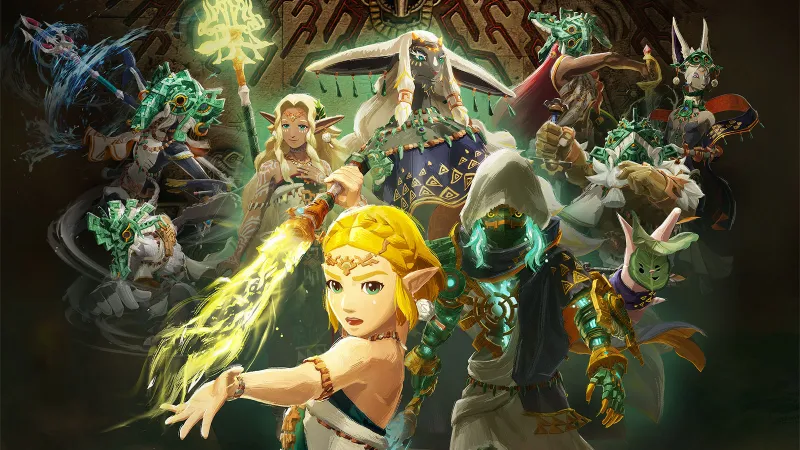The Zelda franchise values its narrative, but its importance to defining the series rests behind elements like exploration and puzzle solving. The story of Zelda is, however, important to me, and it is especially personally important when it comes to The Legend of Zelda: Breath of the Wild and The Legend of Zelda: Tears of the Kingdom. Without offering spoilers, the previous Hyrule Warriors, Age of Calamity, did not take Breath of the Wild’s canon seriously. It led to a supremely disappointing experience, despite some fun musou action. Age of Imprisonment offers myriad improvements across the board mechanically and visually, but my favorite element is that it treats Tears of the Kingdom’s story with respect.
Age of Imprisonment isn’t a prequel to Tears of the Kingdom, per se, but if you played that 2023 game, you will know what to expect from the story. It plays it safe by offering very little in the way of revelation, but it works as an opportunity to see more of Zelda’s circumstances and introduces lots of new characters that all have great designs and are fun to play as. The dialogue and voice performances are not particularly impressive (living up to the standard set by Tears of the Kingdom), but I enjoyed spending more time with Zelda and Rauru, and gaining a deeper insight into the tribulations they experienced.
Like a typical Zelda game, however, the primary experience is not the plot. Imprisonment is a Musou game that follows in the mechanical and structural footsteps of Dynasty Warriors. Zelda must go on a series of missions with a deep bench of secondary characters, fighting thousands of enemies at a time across battlefields large and small. The gameplay is familiar to other games in the genre, and undeniably repetitive, but a number of wrinkles keep the action fresher than comparable games.
Alongside bouncing between multiple characters and using their various special moves as cooldowns expire, boss characters now enact certain special moves that require pausing time to select the correct counter for big payoffs. Knocking bosses out of the air or breaking their shields adds worthwhile contemplation to combat, but like mashing the attack button over and over against the same types of enemies, it did get old after approximately 20 hours. That said, it is the most enjoyable Musou combat I’ve experienced to date, and on Switch 2, it all looks and runs fantastically, which is a welcome upgrade over the first two Hyrule Warriors games.
Outside of combat, you look over Tears of the Kingdom’s familiar map and allocate the items you’ve collected to where they are needed to upgrade your fighters. I enjoyed this break between missions because it offered the feeling of perusing Tears of the Kingdom’s map, and also created a worthwhile loop of collecting items and distributing them. It provided the added benefit of actually making me want to tackle sidequests, despite them all playing similarly. The items can also be used before each mission to upgrade weapons, increase attack power, experience, speed, and other stats, which makes all the collected items feel genuinely valuable and worth chasing.
Perhaps Age of Imprisonment’s best trick, however, is how it makes me feel like I’m back in the world of Tears of the Kingdom. The art direction, menu elements, music, sound effects, and more all make me feel like I am back in 2023 getting lost in one of my favorite games of the last decade. Imprisonment’s gameplay is very different, and not nearly as engaging or consistently novel, but I eagerly pulled the warm blanket around me while executing Zelda’s ultimate attack for the hundredth time.


